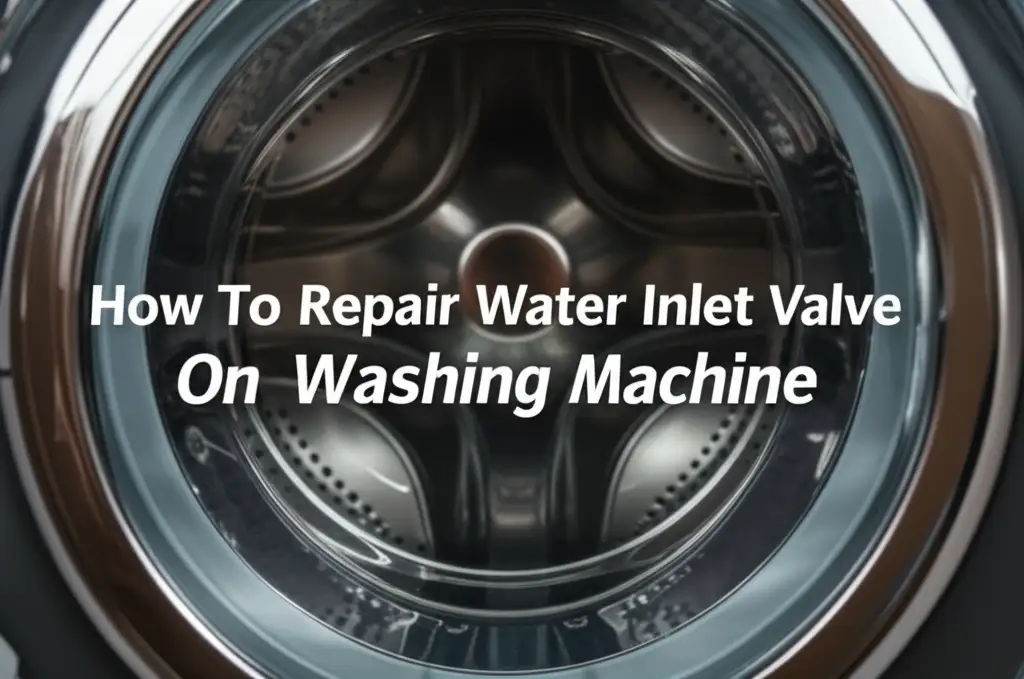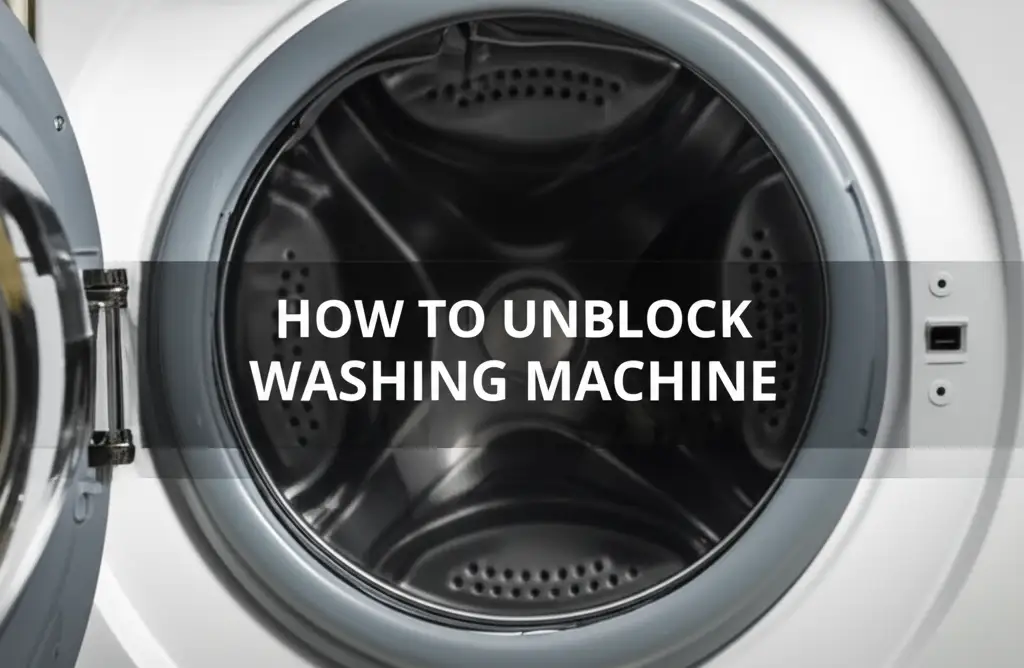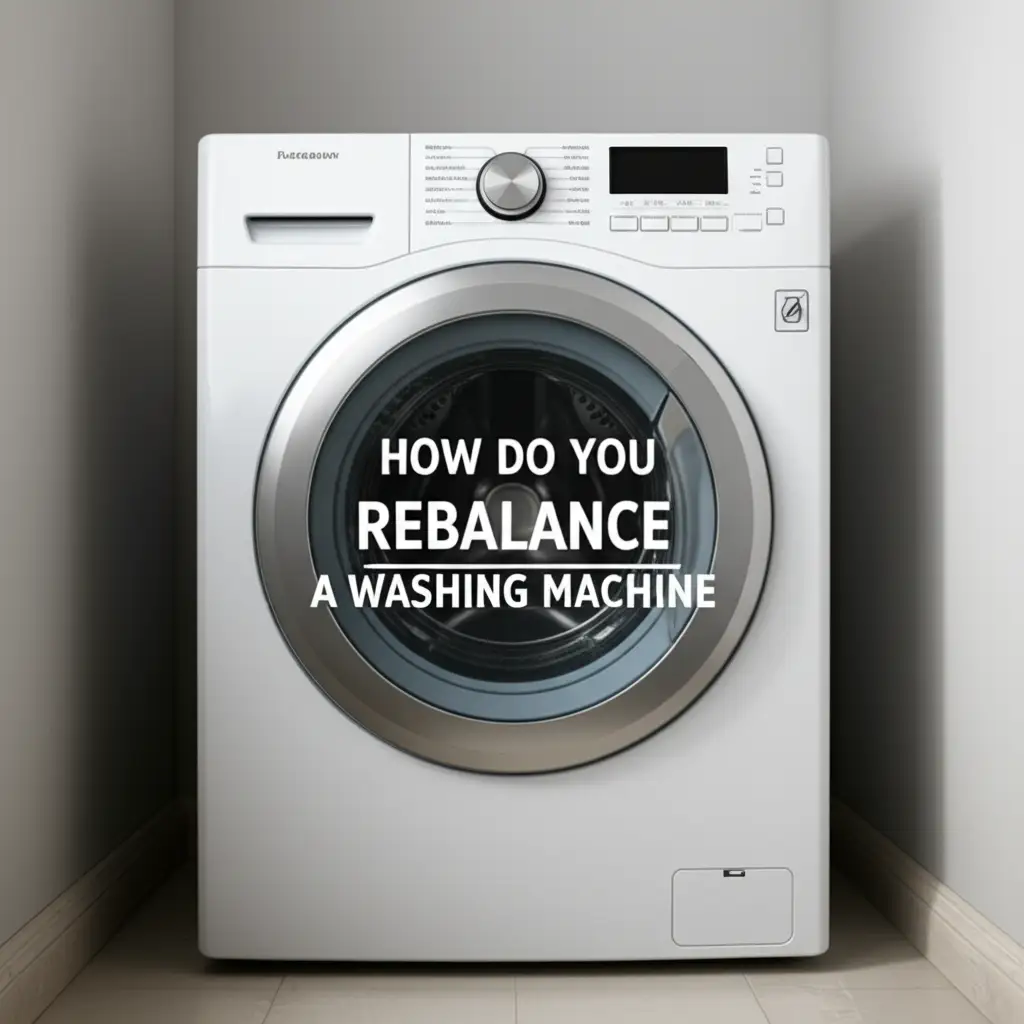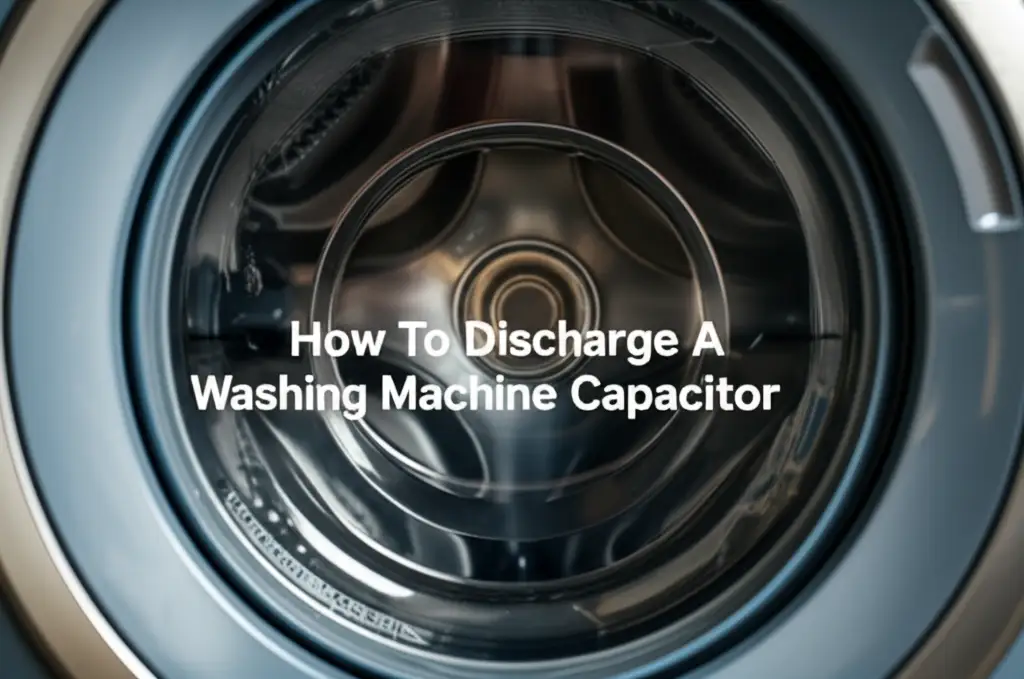· Tessa Winslow · Washing Machine Repair · 15 min read
How To Repair Water Inlet Valve On Washing Machine

Fix Your Washer’s Water Flow: Repairing the Inlet Valve
Have you ever started a load of laundry, only to find your washing machine isn’t filling with water, or perhaps it’s filling too slowly? This common issue often points to a problem with the washing machine’s water inlet valve. This small but vital component controls the flow of water into your appliance, making it crucial for proper operation. Knowing how to repair a water inlet valve on a washing machine can save you time, money, and the hassle of a broken laundry routine.
In this guide, I will walk you through everything you need to know about diagnosing, repairing, and even replacing this important part. We will cover common symptoms, necessary safety precautions, and detailed step-by-step instructions. By the end, you will have the confidence to tackle this DIY repair. Let’s get your washing machine back to full working order.
Takeaway
- Identify Symptoms: Watch for no water, slow filling, or constant filling.
- Prioritize Safety: Always disconnect power and water before starting any repair.
- Diagnose Correctly: Check water pressure and valve screens before replacing parts.
- Follow Steps: Access, disconnect, remove, replace, and reassemble the valve carefully.
- Maintain Regularly: Clean valve screens to prevent future issues.
A washing machine’s water inlet valve controls water flow into the machine. Repairing it often involves checking for clogs in the screens or replacing the entire solenoid valve assembly. You need to ensure the power is off and water supply is disconnected before starting the repair.
Unraveling the Mystery: What is a Washing Machine Water Inlet Valve?
The water inlet valve on your washing machine is a critical component. It acts like a gatekeeper, controlling when and how much water enters the drum. Without a functioning valve, your washer simply cannot perform its primary job of cleaning clothes. Understanding its role is the first step in successful repair.
This valve typically has one or more solenoid coils. These coils open small internal gates when electricity passes through them. When the washing machine’s control board sends a signal for water, the correct solenoid activates. This allows water to flow into the machine at the programmed temperature and amount. The valve connects directly to your home’s hot and cold water supply hoses.
Sometimes, the valve unit includes tiny mesh screens at its inlets. These screens capture sediment and debris from your household water supply. This prevents contaminants from entering and potentially damaging the washing machine’s internal components. Over time, these screens can become clogged, leading to water flow problems. Knowing this helps you understand why your washer might not be working right.
Spotting the Signs: Common Symptoms of a Faulty Water Inlet Valve
Identifying the symptoms of a bad water inlet valve helps you narrow down the problem quickly. My own experience with a noisy, non-filling washer taught me to pay attention to these signs. Early detection can prevent more complex issues later on. Your washing machine will often tell you something is wrong.
One common symptom is the washing machine not filling with water at all. You might start a cycle, hear the machine hum, but no water flows into the drum. This indicates the valve is not opening properly. A completely blocked valve or a failed solenoid can cause this issue. This often leaves your clothes dry at the end of what should have been a wash cycle.
Another sign is slow filling, where the machine takes an unusually long time to fill. This suggests a partial blockage in the valve’s screens or a weakening solenoid. Water trickles in rather than flowing freely. Sometimes, the washing machine might even fill with the wrong temperature water. If you select a cold wash, but hot water enters, or vice-versa, one of the valve’s solenoids might be stuck open or closed.
You might also hear a loud buzzing or vibrating noise when the machine tries to fill. This often happens if the valve is trying to open but is partially obstructed or failing. In rare cases, a faulty valve can cause constant filling, even when the machine is off, leading to an overflow. This is a serious issue that needs immediate attention.
Safety First: Essential Preparations Before You Begin Your Washer Repair
Before you attempt any repair on a washing machine, safety must be your top priority. Working with water and electricity without proper precautions can be dangerous. I always make sure to take these steps myself to avoid accidents. This preparation phase is crucial for your protection.
First, you must disconnect the washing machine from its power source. Simply unplugging the machine from the wall outlet is the safest way to do this. Do not rely on turning off the machine’s power button, as some internal components may still be live. This step protects you from electric shock during the repair process. Make sure the plug is completely out of the socket before you touch anything else.
Next, turn off the water supply to the washing machine. You will find two water hoses connected to the back of the machine, one for hot water and one for cold. Each hose should have a dedicated shut-off valve on the wall behind the washer. Turn these valves clockwise until they are completely closed. This prevents water from flooding your laundry area once you start disconnecting components. If you do not see individual shut-off valves, you might need to turn off the main water supply to your house.
Finally, prepare your workspace and gather your tools. Have towels ready to catch any residual water from the hoses. You will likely need basic tools like a screwdriver (Phillips and flathead), pliers, and possibly a nut driver or socket set, depending on your washing machine model. Having everything ready beforehand makes the repair process smoother and safer. For more general tips on DIY appliance repair, consider visiting a guide on how to do it yourself washing machine projects.
Pinpointing the Problem: How to Diagnose a Water Inlet Valve Issue
Before replacing the water inlet valve, it is important to confirm it is indeed the source of your washing machine’s trouble. Several other issues can mimic a faulty valve. Proper diagnosis saves you time and money. I always run through these checks myself to ensure I am fixing the right thing.
Start by checking your home’s water supply and pressure. Make sure the hot and cold water faucets behind the washing machine are fully open. If they are partially closed, the machine might not get enough water. You can also disconnect the hoses from the back of the washer and point them into a bucket to test water flow. If the water pressure is low from your home’s supply, that is a different problem altogether, not related to the valve. Strong, steady streams indicate good pressure.
Next, inspect the inlet screens on the water inlet valve itself. These are small mesh filters located where the water hoses connect to the valve. Over time, sediment and mineral deposits can clog these screens. If they are blocked, water cannot pass through efficiently. You can often carefully remove these screens with needle-nose pliers and clean them under running water using a stiff brush. This simple cleaning can often resolve slow fill issues without needing a full valve replacement.
Also, examine the fill hoses for kinks or blockages. A bent hose can restrict water flow, making it seem like the valve is faulty. Ensure the hoses are straight and free from obstructions. Check for any signs of leaks around the hose connections; a leak could indicate a loose connection rather than a bad valve. By carefully checking these simple things, you can confidently determine if the water inlet valve is the true culprit.
Your Step-by-Step Guide: How to Repair or Replace the Water Inlet Valve
Once you have diagnosed the water inlet valve as the problem, you are ready to proceed with the repair or replacement. The process varies slightly between top-load and front-load washing machines. However, the core steps remain the same. This part often feels intimidating, but with clear instructions, you can do it.
Accessing the Water Inlet Valve
For most top-load washers, you will need to access the valve from the back of the machine. Remove the screws holding the back panel in place and carefully lift it off. The water inlet valve is usually mounted near the top, where the water hoses connect. For front-load washers, you might need to remove the top panel of the machine. These panels are typically held by screws at the rear or along the sides. Once the panel is off, the valve should be visible, often located at the back upper corner. Be careful not to scratch any surfaces while removing panels.
Disconnecting the Valve
With the valve exposed, you will need to disconnect a few things. First, remove the two water hoses (hot and cold) that connect to the valve. You might need pliers to loosen the hose fittings. Be prepared for a small amount of residual water to drain out. Next, disconnect the electrical wiring harnesses that plug into the solenoid coils on the valve. These usually have clips or tabs that you squeeze to release them. Finally, remove the mounting screws or clips that secure the valve to the washing machine frame. Take a picture of the connections before you remove them. This helps you remember where everything goes later.
Removing the Old Valve and Installing the New One
Carefully pull the old water inlet valve assembly out of its position. You might need to gently wiggle it to free it. Sometimes, there is a small drain hose or dispenser hose connected to the valve that you will also need to detach. Once the old valve is out, take your new replacement valve and reverse the steps. Ensure any rubber gaskets or O-rings are correctly seated on the new valve. Push the new valve into its mounting bracket and secure it with the screws or clips you removed earlier.
Reconnecting and Testing
Reconnect the electrical wiring harnesses to the new valve, ensuring they click firmly into place. Then, reattach the hot and cold water hoses to their respective inlets on the new valve. Make sure these connections are tight to prevent leaks, but do not overtighten. Once everything is reconnected, replace the back or top panel of your washing machine. Now, you can carefully turn the water supply back on at the wall valves. Plug the washing machine back into its power outlet. Run a short test cycle, like a rinse and spin. Watch for any leaks around the new connections and ensure the machine fills with water correctly and at the right temperature. If you encounter any issues with water flow or drainage, a guide like will a washing machine drain if turned off could provide additional troubleshooting context related to water management.
Beyond Replacement: Troubleshooting & Maintaining Your Water Inlet Valve
Even after replacing the water inlet valve, minor issues can sometimes arise. Knowing how to troubleshoot these problems and perform simple maintenance can extend the life of your new valve. I have learned that a little proactive care goes a long way in appliance longevity. These steps help keep your laundry routine smooth.
One common issue, even with a new valve, is a persistent slow fill or no fill. If this happens, recheck the mesh screens on the valve where the hoses connect. Despite installing a new valve, debris might have entered during installation or could have been present in your water line. Carefully remove and clean these screens again. Sometimes, a stubborn particle just needs a second cleaning. You can use a small brush or a toothpick to dislodge any remaining buildup.
Another troubleshooting tip involves checking the water pressure from your home’s supply directly. If your entire house experiences low water pressure, the washing machine might not fill properly, even with a perfect valve. Consult a plumber if you suspect a whole-house pressure issue. Also, ensure the hot and cold water lines are connected correctly to the valve. Swapped lines can cause temperature mix-ups or slow filling if the machine expects a different temperature.
For ongoing maintenance, consider cleaning your valve’s inlet screens every 6-12 months. This is especially important if you live in an area with hard water, which contains more minerals that can cause buildup. Regularly checking the hoses for kinks or damage also helps. Proper maintenance of the water inlet system reduces wear and tear on the valve and helps keep your washing machine operating at its best. Thinking about general washing machine care? Explore tips on how to clean your top loader washing machine to keep the entire appliance in good shape.
When to Call in the Pros: Knowing Your Limits in Washer Repair
While repairing a washing machine water inlet valve is a manageable DIY task for many, it is important to know when to seek professional help. There are times when a problem is beyond simple component replacement or your comfort level. Recognizing these limits prevents further damage and ensures your safety. My personal rule is, if I am unsure, I call an expert.
One clear sign to call a professional is if you have followed all the diagnostic and repair steps, but the problem persists. If the washing machine still does not fill correctly after replacing the valve and checking all hoses and connections, the issue might lie deeper. This could involve the machine’s control board, the pressure switch, or other electrical components. Diagnosing these parts often requires specialized tools and knowledge of appliance circuitry. Tampering with complex electrical systems without expertise can be dangerous.
Another reason to call a professional is if you encounter unexpected issues during the repair process. This includes discovering extensive water damage, rust, or other broken components that were not part of your initial diagnosis. Sometimes, a seemingly simple repair can uncover a cascade of underlying problems. If you feel uncomfortable at any point, or if the repair seems too complex, do not hesitate to stop. Appliance technicians have specific training and experience to handle a wide range of faults safely and efficiently.
Finally, consider the age and overall condition of your washing machine. If your machine is very old and frequently breaking down, repairing one component might be a temporary fix. A professional can advise you on whether further repairs are cost-effective or if investing in a new washing machine is a better option. They can also provide a comprehensive assessment of the appliance’s health. Knowing when to step back and let an expert take over is a sign of smart home management.
FAQ Section
Why is my washing machine not getting water?
Your washing machine might not get water due to several reasons. The most common cause is a faulty water inlet valve, which controls water flow. Clogged screens on the valve, low water pressure from your home’s supply, or kinked fill hoses can also restrict water. Always check these simpler issues first.
How much does it cost to replace a water inlet valve on a washing machine?
Replacing a washing machine water inlet valve typically costs between $100 and $300. This estimate includes both the part and labor if you hire a professional. Doing it yourself significantly reduces the cost, as the part itself usually ranges from $30 to $100 depending on your washing machine model and brand.
Can I clean the water inlet valve on my washing machine?
Yes, you can often clean the small mesh screens located at the inlets of your washing machine’s water inlet valve. These screens collect sediment and mineral deposits over time, restricting water flow. Carefully remove them with pliers and clean them under running water with a brush to remove any buildup.
How do you test a washing machine water inlet valve?
To test a water inlet valve, first ensure water pressure is good. Disconnect the electrical connectors and check the solenoid coils with a multimeter for continuity (usually 50-1000 ohms). A reading of infinity indicates a bad coil. You can also temporarily connect 120V AC directly to a solenoid (with extreme caution) to see if it clicks open.
How long do washing machine water inlet valves last?
Washing machine water inlet valves typically last 5 to 10 years, depending on usage frequency and water quality. Hard water or excessive sediment can shorten their lifespan by causing clogs or wear on the internal components. Regular cleaning of the inlet screens can help prolong the valve’s life.
Conclusion
Successfully repairing a water inlet valve on your washing machine is a rewarding DIY project that saves you money and gets your appliance back in action. We have explored everything from identifying common symptoms like no water or slow filling to the critical safety precautions you must take. By following our step-by-step guide, you can confidently diagnose the problem, access the faulty valve, and replace it with a new one. Remember, proper diagnosis and careful execution are key to a successful repair.
Maintaining your new water inlet valve through regular screen cleaning will help prevent future issues and ensure smooth operation. While many repairs are within reach for the average homeowner, always know your limits and consider calling a professional if the problem becomes too complex or if you feel unsafe. With this knowledge, you are now equipped to tackle this common washing machine repair. Get your laundry routine back on track today!





